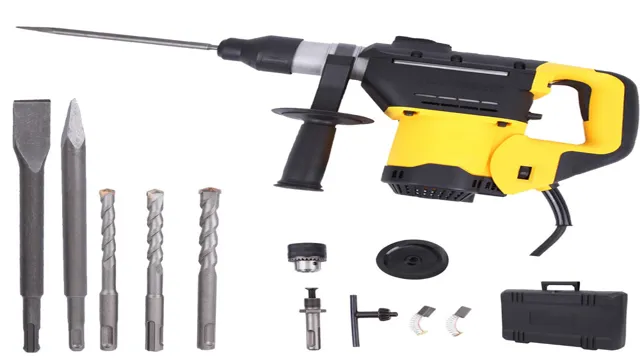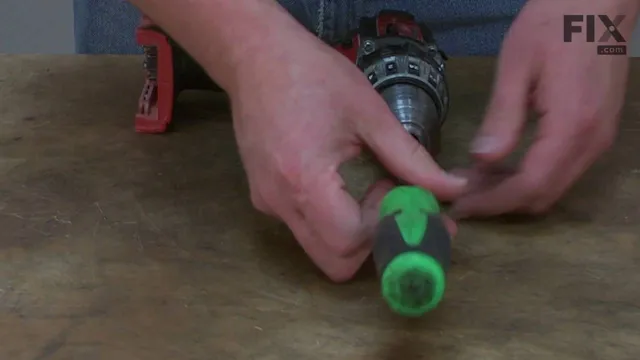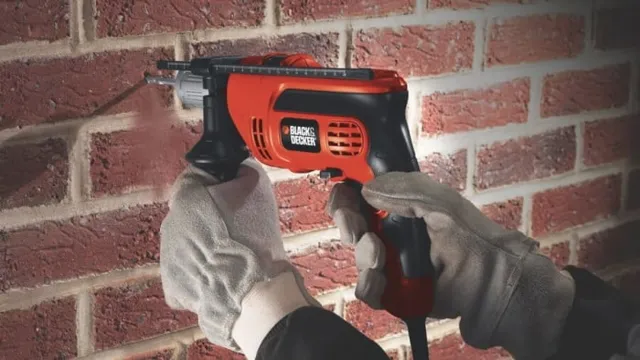Do You Need a Hammer Drill to Drill Into Brick? Expert Tips and Insights
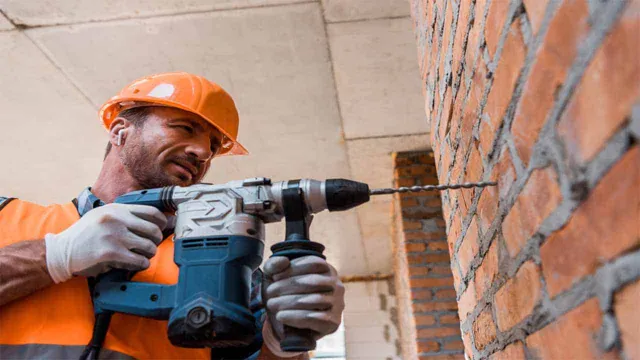
If you are planning a DIY project that involves drilling into brick, you may be wondering which tool to use. Should you go with a regular drill or opt for a hammer drill? The answer may depend on the type of brick you are working with and the purpose of your project. Brick can be a tough material to work with, as it is sturdy and dense.
This makes it a popular choice for outdoor projects such as building a fire pit or laying a brick patio, but it can also pose a challenge when it comes to drilling. A regular drill may be suitable for drilling into softer types of brick, such as clay or adobe. However, for harder types of brick such as concrete or clay bricks, a hammer drill is typically recommended.
The hammer drill offers a higher level of power and torque, making it easier to penetrate tough brick surfaces without causing damage to the drill or the brick itself. It can also help prevent the drill bit from slipping, which can be a common issue when working with brick. Overall, choosing the right drill for your brick project depends on a variety of factors.
Considering the type of brick, the size of the hole you need to drill, and your level of experience can help you make the best decision. With the right tools and techniques, you can successfully drill into brick and complete your DIY project with confidence.
Understanding the Properties of Brick
If you’re trying to drill into brick, you might be wondering if you need a hammer drill. The answer is, it depends on the type of brick you’re working with and the size of the hole you want to make. If you’re drilling a small hole in a soft or porous brick, a regular drill should suffice.
However, if you’re trying to drill a larger hole, or if the brick is hard and dense, a hammer drill would be more effective. A hammer drill is designed to create a pounding motion as it spins, which helps to break up the brick and create a hole. Without this feature, it can be difficult to penetrate the brick, and you may end up damaging your drill bit.
So, while a hammer drill isn’t always necessary, it’s a good idea to have one on hand if you plan on doing a lot of brick drilling.
Hardness and Strength
When it comes to understanding the properties of brick, hardness and strength are two key factors to consider. Hardness refers to a material’s ability to resist indentation or scratching, factors which can contribute to the overall lifespan of a brick structure. Strength, on the other hand, is a measure of how much force a material can withstand before breaking or deforming.
In the case of bricks, strength is crucial for ensuring that buildings and walls remain stable and secure. When choosing bricks for a construction project, it’s important to take both hardness and strength into account. While some types of bricks may be harder and more durable, others may have greater strength and be better suited for load-bearing applications.
By carefully considering these properties, builders can select the right bricks for their intended use, helping to ensure lasting quality and safety for years to come.
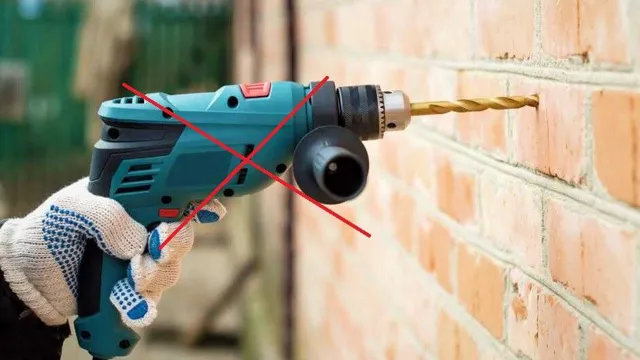
Porosity and Durability
Brick is a commonly used building material with unique properties that make it an excellent option for construction projects. One of the vital characteristics of brick is its porosity, referring to the rate at which it can absorb and release moisture. It is crucial to understand the porosity of bricks because it affects their durability and strength.
Bricks with high porosity are more susceptible to damage from freeze-thaw cycles, which can lead to cracking and crumbling. On the other hand, low porosity bricks are more durable and resistant to the elements. Additionally, bricks can also have different compressive strengths depending on their manufacturing process and materials used.
Therefore, it is essential to select the right type of brick for each project based on its porosity and durability. Only by understanding the properties of brick can we make informed decisions about their use in construction.
Impact Resistance
Bricks are known for their high impact resistance, which makes them a reliable building material for various structures. The interlocking nature of the bricks enables them to spread the force of impact throughout the structure, which minimizes the likelihood of damage. Additionally, bricks are manufactured in a way that makes them durable, which ensures that they can withstand the test of time.
When subjected to extreme weather conditions, such as strong winds and hailstorms, bricks have been proven to be resilient and offer a high level of protection to the occupants of a building. Secondly, bricks have a unique thermal mass property that enables them to store heat and release it slowly, which provides insulation to a building. This property ensures that buildings made of bricks remain cool during hot weather and warm during cold weather.
Therefore, bricks are a cost-effective and sustainable building material that offers high levels of durability and protection to occupants.
The Difference between a Regular Drill and a Hammer Drill
When it comes to drilling into hard materials, such as brick, many people wonder if they need a hammer drill to get the job done. While it is possible to drill into brick with a regular drill, it can be a difficult task as the drill bit will often slip and slide on the surface. This is where a hammer drill comes in handy.
A hammer drill’s main function is to provide a high level of percussion force to the drill bit, allowing it to penetrate hard surfaces easier and faster. The hammering action helps to break up the material, making it easier for the drill bit to cut through. So, while you technically don’t need a hammer drill to drill into brick, it will certainly make the job much easier and quicker.
So, if you’re planning on drilling into brick, it’s recommended to use a hammer drill to get the job done efficiently.
Mechanism of Action
When it comes to getting a job done, having the right tools is key. One tool that can make a big difference is a hammer drill. While a regular drill uses a rotating motion to create a hole, a hammer drill adds an up-and-down thrust to the rotation.
This extra force allows the drill to tackle tougher materials, like concrete and masonry, with ease. So how does a hammer drill achieve this? The mechanism of action is relatively simple: as the drill bit rotates, a piston inside the drill rapidly moves back and forth. This motion is what creates the hammering effect, as the piston strikes the back of the bit at a high frequency.
This rapid impact, combined with the rotation of the bit, makes it much easier to drill through tougher surfaces. Of course, not every job requires a hammer drill. For lighter projects, a regular drill is typically sufficient.
But if you find yourself struggling to get through tough materials, or if you’re planning to take on a large-scale renovation project, a hammer drill can be an invaluable tool. With its extra power and specialized mechanism of action, it can make even the most difficult drilling tasks a breeze.
Power and Speed
If you’re confused about which drill to use for your next project, let’s talk about the difference between a regular drill and a hammer drill. A regular drill is great for simple tasks like drilling holes into wood or metal. It’s lightweight and easy to maneuver, making it an ideal tool for DIY projects.
However, when it comes to drilling into tough materials like concrete or brick, a regular drill won’t cut it. That’s where a hammer drill comes in. This type of drill has a high-powered motor that delivers a forceful, hammering action to break through even the toughest surfaces.
With its incredible power and speed, a hammer drill is the perfect tool for heavy-duty tasks like remodeling or construction projects. So, if you need to drill through concrete or other tough materials, make sure you have a hammer drill on hand.
Suitable Drill Bits
When it comes to drilling, it’s important to choose the right type of drill bit for the job. Regular drills and hammer drills may look similar, but they have different purposes. The main difference between the two is that a hammer drill has a pounding mechanism that allows it to drill through tougher materials like concrete and brick.
Regular drills are better suited for softer materials like wood and plastic. When selecting drill bits for your project, be sure to choose ones that match the type of drill you’re using. For example, if using a regular drill, choose drill bits made for wood or metal.
If using a hammer drill, choose drill bits made for masonry. Choosing the right drill bit can make all the difference in the success of your project.
Can You Drill into Brick with a Regular Drill?
If you’re wondering whether you need a hammer drill to drill into brick, the answer is a bit complicated. Technically, you can use a regular drill to drill into brick, but it’s not recommended. Brick is a masonry material, which means it’s dense and hard.
Trying to drill into brick with a regular drill can be frustrating and time-consuming, and you’ll likely go through drill bits quickly. A hammer drill, on the other hand, is specifically designed for drilling into masonry materials like brick. The hammering action helps to break up the material, making it easier to drill through.
If you’re planning to drill into brick, it’s best to use a hammer drill to make the job faster and easier, while also minimizing the risk of damaging your drill. So, while it’s technically possible to drill into brick with a regular drill, using a hammer drill is definitely the way to go.
Factors to Consider
If you’re planning on drilling into brick, you may be wondering if a regular drill will do the job. The answer is yes, you can use a regular drill to drill into brick, but there are some factors to consider. Firstly, it’s important to choose the right masonry drill bit.
These bits are specifically designed to drill into tough materials like brick and concrete and will make the job much easier. Additionally, it’s important to remember that drilling into brick can be a noisy and messy process, so you may want to take some precautions to protect your hearing and surroundings. It’s also a good idea to use a hammer drill rather than a regular drill, as this will make the process faster and less strenuous on your arms.
Overall, with the right drill bit and precautions, you can successfully drill into brick with a regular drill.
Step-by-Step Guide
Yes, you can drill into brick with a regular drill, but it’s not as simple as drilling into wood or other materials. The density of brick makes it difficult to penetrate, and you’ll need the right tools and techniques to do a proper job. To start, you’ll need a masonry bit, which is harder and more durable than a standard drill bit.
Next, you’ll want to mark off the area you want to drill, so you know where to start. Then, you’ll want to use a medium to high torque drill, as the power needed to penetrate the brick is higher than other materials. It’s also important to go slowly and apply even pressure, so you don’t damage the drill or the brick.
With the right tools and technique, drilling into brick is possible with a regular drill, but be prepared for a bit of a challenge.
When to Use a Hammer Drill on Brick?
Have you ever wondered if you need a hammer drill to drill into brick? Well, the answer depends on the type of brick and the size of the hole you need to make. If you’re drilling into soft or porous brick, you can use a regular drill with a masonry bit. However, if you’re drilling into harder or thicker brick, a hammer drill will make the process much easier.
A hammer drill features a hammering function that allows it to break up dense materials like brick as you drill. It also prevents the bit from overheating and getting stuck. So, if you’re drilling a small hole into a soft brick, a regular drill will work fine.
But for larger holes, hard or thick brick, a hammer drill is definitely worth the investment. Just be sure to use the correct bit size and take proper safety precautions while working.
Types of Masonry and Brickwork
When it comes to working with masonry and brickwork, there are various techniques and tools that can be used. One of the most commonly used tools for drilling into brick is a hammer drill. But when should you use it? The answer depends on the job you are tackling.
If you are simply drilling small holes for screws or anchors, you can use a regular drill with a masonry bit. However, if you’re dealing with tougher materials like concrete, it’s recommended to use a hammer drill. Hammer drills have a hammering mechanism that helps break up the material as you drill, making it easier and faster to make holes.
They’re also ideal for larger diameter holes and deeper holes that may require the use of longer bits. So, if you’re working on a project that requires drilling through tough masonry materials like bricks, stones, or concrete, then a hammer drill is the way to go. It will save you time and effort and ensure that your holes are straight and precise.
Advantages of Using a Hammer Drill
A hammer drill is an excellent tool to use when working with brick. The advantages of using a hammer drill include enhanced drilling power and speed, which reduces the time and effort needed to complete the job. When it comes to drilling on brick, the hammer drill utilizes a unique mechanism that generates a powerful force to break through the hard surface, making it ideal for drilling into masonry materials such as brick, concrete, and stone.
To get the best result, it is advisable to use a masonry bit designed for hammer drills while drilling on brick. The bit has a unique design that enhances its performance, reducing the likelihood of it slipping off the surface while drilling. With the right bit and hammer drill combination, you can easily and quickly drill into brick without worrying about damaging the surface or the drill bits.
So, if you’re planning to drill on brick, consider using a hammer drill to make the task more manageable, faster, and efficient.
Summary and Conclusion
In conclusion, whether or not you need a hammer drill to drill into brick really depends on how much you enjoy feeling like a superhero successfully battling a stubborn wall. Without a hammer drill, you may find yourself feeling like a mere mortal, struggling to make any progress with your drill bit. But if you’re up for the challenge and don’t mind a bit of extra effort, a regular drill may just do the trick.
Either way, remember to wear safety goggles, take breaks if needed, and ultimately, channel your inner DIY warrior.”
FAQs
What is a hammer drill used for?
A hammer drill is used for drilling holes into materials such as brick, concrete, and masonry.
Can a regular drill be used on brick?
It is not recommended to use a regular drill on brick as it may not be powerful enough to penetrate the tough material. Using a hammer drill is recommended for drilling into brick.
What is the difference between a regular drill and a hammer drill?
A regular drill rotates quickly to drill through materials, while a hammer drill has an additional hammering function that helps to break up tough materials like brick and concrete.
Do I need a hammer drill to drill into brick?
Yes, it is recommended to use a hammer drill when drilling into brick to ensure that the hole is drilled properly and efficiently.
What size drill bit should I use when drilling into brick?
The size of the drill bit will depend on the size of the hole you need to drill. It is recommended to use a masonry bit that is slightly larger than the screw or anchor you plan to use.
Can a hammer drill be used for other materials besides brick?
Yes, a hammer drill can be used on other tough materials like concrete, stone, and masonry.
What safety precautions should I take when using a hammer drill on brick?
Always wear eye protection and a dust mask when drilling into brick to avoid inhaling dust and debris. Make sure that the drill is secured and stable before beginning to drill.

